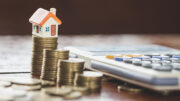Newly released data from HomeLet indicates a downward trend in the UK rental market, marking the third consecutive month of declining prices. The latest figures show a -0.6% drop, following a -0.9% decrease in December 2023. This series of reductions has resulted in the steepest fall in rental rates since October 2020.
London, is mirroring this trend, with rental prices plummeting by -2.2%, equating to the most significant month-on-month decline since October 2020. Andy Halstead, CEO of HomeLet & Let Alliance, voices concern, stating, “landlords and tenants are still under immense pressure amid tough economic conditions, and short-term gains do not reflect the long-term struggles faced by the housing industry.” Despite the recent downturn, experts at HomeLet predict a potential increase in costs by 5% – 10% by January 2025.
The HomeLet Rental Index offers a monthly analysis of archived rents to provide a broad perspective of the UK rental market. It highlights that this is the third consecutive month of declining rent prices, the most substantial decrease recorded since autumn 2020 (-1.3%). However, industry experts urge caution, suggesting that these short-term improvements might not withstand the long-term challenges ahead.
The situation in London, with a significant drop of -2.2%, contrasts with the Midlands, where both the East and West Midlands have seen rent hikes, deviating from the national trend this month. Despite the current downward trajectory in rental prices, which alleviates some pressure on renters, the bigger picture shows that rental prices are still +7.51% higher than in February 2023 and +18.4% higher than in February 2022, equating to an additional £200pcm over two years.
This increase in rental prices does not align with wage growth, leaving many worse off than in the post-Covid era. This is further substantiated by HomeLet’s exclusive data on the rent-to-income ratio, indicating that the average renter spends 33.5% of their income on rent, a +2.2% increase since January 2023.
Halstead expresses mixed feelings about the recent data, acknowledging the decrease in rental prices as a positive sign but also recognizing the market’s vulnerability to external factors. He comments, “Now is not the time to get carried away with these marginal improvements…we need to take it with a massive pinch of salt and hope that the declines remain steady.” He anticipates the forthcoming Spring Budget, noting the potential for new policies to support landlords and tenants, yet emphasizes the need for a significant focus on rebuilding the housing industry.
Halstead concludes with a cautious outlook, acknowledging the slight relief for tenants but emphasizing the broader, challenging landscape. He notes that rent could potentially rise by 5% – 10% by this time next year if the current economic situation persists, posing ongoing challenges for landlords, including rising costs and high buy-to-let mortgage rates. The effectiveness of governmental interventions in reversing these trends remains to be seen.







